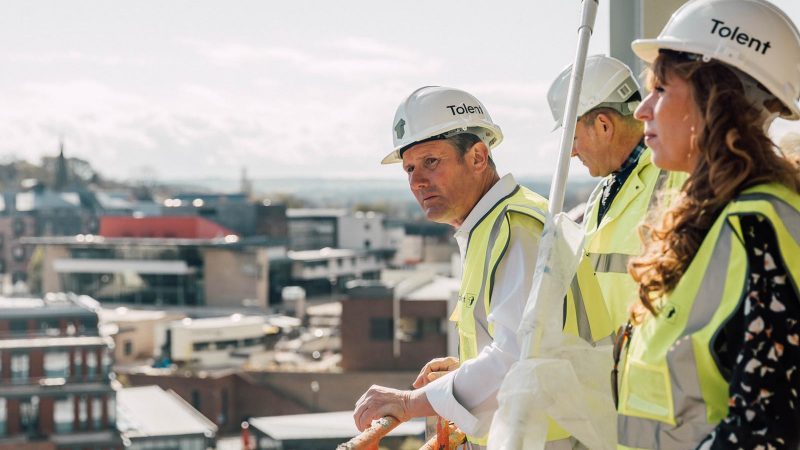
A month ago, I set out my annual benchmarks for the May elections. How did Labour do against the various measures?
The Hartlepool by-election was a catastrophic defeat. We lost the seat but couldn’t even wholly explain this as being caused by the right uniting behind the Tories after having been split in 2019 between them and the pro-Brexit Reform UK party, as our own vote share fell by 9 percentage points. Clearly, we still have a massive political problem in the former “Red Wall” seats in the North and Midlands.
In Scotland, Anas Sarwar’s energetic campaign pulled Labour up from its weak polling figures at the start of the year, and the party is no longer seen as virtually extinct. But Labour went down two seats to 22, did not overtake the Tories to take second place, and its constituency and regional list vote shares were both down fractionally, by 1.0 and 1.1 percentage points. In terms of raw number of votes, Labour gained 70,000 extra votes compared to 2016.
Wales was the outstanding success story of the night, thanks to Mark Drakeford’s steady handling of the Covid crisis. Every indicator was positive: Senedd seats up by one to 30, equal with Labour’s highest ever score, constituency vote up by 5.2 percentage points, regional list vote up by 4.7 percentage points, raw number of votes up by over 80,000. This seems to indicate that Labour’s decline in English post-industrial regions is not inevitable or irreversible, as in Wales we won back such areas compared to the 2019 general election.
London was another Labour win for Sadiq Khan as mayor, and the party only lost one list seat from its high tally of 12 London Assembly members. However, Sadiq’s first round vote share was down 4.2 percentage points, and the Assembly list vote share was down 2.2 percentage points.
Labour was defending 14 police and crime commissioners (PCCs), but lost half these to the Tories (Cheshire, Cleveland, Derbyshire, Humberside, Lancashire, Leicestershire, and Nottinghamshire) in a miserable set of results.
The combined authority mayors were a mixed but overall positive set of results, reflecting the extent to which voters give a personal verdict on the candidates as well as their parties for these high-profile roles. Andy Burnham and Steve Rotherham held Greater Manchester and Liverpool City Region easily, Tracy Brabin won the new West Yorkshire mayoralty, and there were stunning southern gains from the Tories for Dan Norris in the West of England and Nik Johnson in Cambridgeshire and Peterborough. However, in the same area as the Hartlepool by-election the Tories held Tees Valley by a landslide, and they increased their grip on the West Midlands, despite Labour winning the PCC on the same boundaries.
Labour held all five of the single-authority mayors up for election, in a diverse range of places (Bristol, Doncaster, Liverpool, North Tyneside and Salford), and despite the recent corruption allegations in Liverpool.
The council election results as always included some churn, where particular authorities bucked the trend for local reasons or because of changes in demography or regional patterns of voting. Overall, they were appalling, but not the worst that Labour has had in recent years.
Labour’s projected national vote share was calculated by the BBC as being 29%, up 1% from the 2019 local elections and also above the 27% low point of the 2017 locals. But a party in opposition ought to be well ahead in mid-term local elections as people usually use them to punish the incumbent government. The circumstances of Covid and the successful vaccine rollout are obviously unique, but that doesn’t stop this being a very poor result. There was some progress against the 2019 general election result in that the Tory lead has been reduced from 12% to 7%, but that isn’t fast enough.
The raw number of Labour councillors, including those not facing re-election this year, is by my calculation now 5,656. This is the lowest figure since 2010. Labour lost a net 327 councillors. Not as bad as the 382 lost in 2017 but still one of our worst ever net losses. We lost control of a net 8 councils, taking us down to 91, the lowest total since 2011.
The pattern of gains and losses makes for sobering reading. We lost very heavily in the North East and West Midlands as the Tories consolidated general election gains in the “Red Wall”, but we also lost seats to the Greens in cities like Bristol and Sheffield, and to the Tories in places with historically key parliamentary marginals like Amber Valley, Southampton, Swindon, Harlow and Basildon. Labour incurred net losses in every region.
Our limited gains reflect demographic changes in Labour’s favour, and sustained local campaigning, in areas like Worthing and the other coastal towns near and increasingly similar to Brighton, Trafford in Greater Manchester, Cambridgeshire, Canterbury, Cornwall, Witney and Chipping Norton in Oxfordshire. These reflect the flip side of losing areas with an older, more pro-Brexit population: gains in areas with a younger, more graduate, more diverse and more pro-Remain population.
But the speed of these gains and the number of places they are happening in does not compensate more than a fraction for the areas we have been losing, and it isn’t the solution to the problem. We have to develop messages and policies that will win over people who voted Tory in these elections and the last general election.




More from LabourList
Andy Burnham unveils bold plan for future economic growth in Greater Manchester
‘The Warm Homes Plan reminds us of the difference Labour can make’
‘Named community sponsorship puts control and compassion at the heart of refugee resettlement’